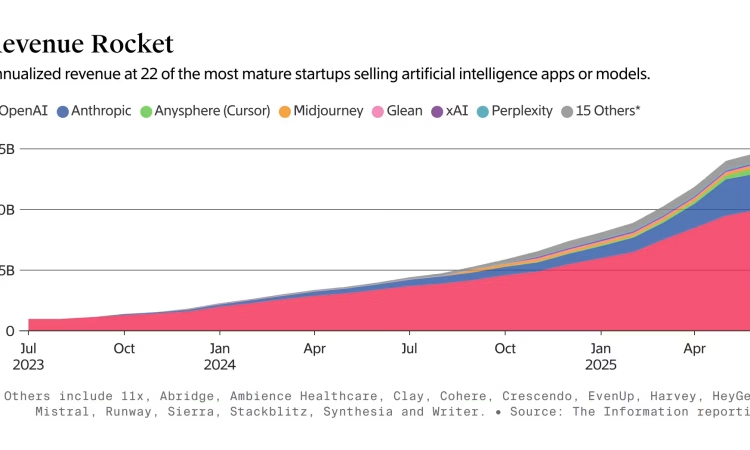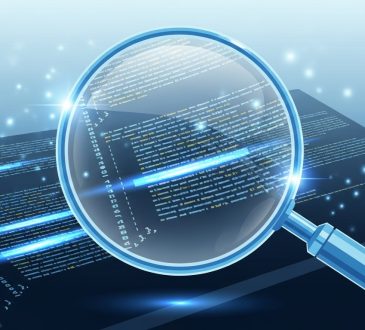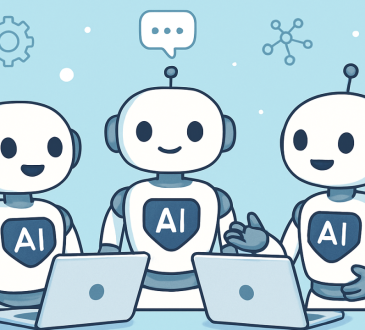Exclusive AI Industry News – April 2025: Tools, Startups, and Research

April 2025 has been one of the most groundbreaking months in the world of Artificial Intelligence (AI). Innovation is accelerating rapidly, and AI has moved from being a futuristic idea to a practical reality—reshaping industries, inspiring startups, and pushing research to new heights.
From next-gen generative tools to ambitious startups and academic breakthroughs, this month highlights a new era of human–machine collaboration and intelligent innovation.
1. AI Tools Redefining Productivity and Creativity
April 2025 witnessed a surge of new AI tools built to enhance creativity, automate workflows, and simplify everyday tasks. Tech giants and agile startups rolled out next-generation solutions that integrate text, audio, video, and 3D modeling within unified platforms.
Top Developments:
- OpenAI launched a new suite of enterprise tools designed for large-scale automation and real-time decision-making. The latest GPT platform now integrates across major workplace software, offering data summarization, code generation, and meeting insights. It’s a sign that AI is becoming an active part of daily business operations.
- Google DeepMind’s “Gemini Workbench” is making waves as an all-in-one AI development environment. Developers can now build and deploy AI models through natural language commands instead of traditional code—opening up AI creation to non-technical users and small businesses.
- Adobe Firefly 3.0 expanded its creative toolkit, adding photorealistic image and video generation directly inside Photoshop and Premiere Pro. The update offers more control over lighting, texture, and tone, blending art and AI seamlessly.
- Runway AI also impressed creators with new generative video tools capable of turning simple text prompts into cinematic-quality clips.
These innovations mark a powerful trend—creativity and computation are now deeply intertwined, transforming how individuals and organizations bring ideas to life.
2. The Rise of AI Startups – Innovation on the Fast Track
April’s startup ecosystem is booming, with record-breaking investments flowing into AI-driven ventures. From healthcare to sustainability, AI innovation is touching every sector.
Emerging Startups to Watch:
- NeuraForge (San Francisco) is developing adaptive AI agents under its flagship product CortexOne, capable of analyzing data systems and autonomously suggesting optimizations. Early adopters in finance and retail report dramatic efficiency gains.
- BioMind Labs (Europe) is merging AI with neuroscience to model brain activity and advance treatments for cognitive disorders—attracting attention from major healthcare and pharmaceutical firms.
- SynthIQ (India) is bridging language barriers across South Asia with low-resource language models that power real-time translation, voice recognition, and regional sentiment analysis—fueling digital inclusion in emerging markets.
- EcoLogic AI is applying predictive modeling to environmental management and sustainability projects.
- PixelPath is transforming architecture and product design through AI-driven visualization tools.
The highlight of April’s startup surge is a growing focus on ethical and sustainable AI. Founders are prioritizing data transparency, user privacy, and eco-conscious computing—values that are now as vital as innovation itself.
3. Academic Research and Breakthroughs Shaping the Future
Academia continues to be the engine driving the next generation of AI breakthroughs. April 2025 brought a series of research milestones that could redefine how AI learns, adapts, and operates.
Key Research Highlights:
- MIT unveiled a self-evolving neural architecture capable of redesigning its own layers for improved performance. This “self-repairing” AI adapts to new data without requiring retraining—ideal for autonomous vehicles, robotics, and real-time analytics.
- Stanford University introduced ContextNet, a model that maintains factual consistency by dynamically verifying information across text sequences—potentially reducing AI “hallucinations.”
- Tsinghua University (China) achieved a major leap in quantum machine learning, combining quantum and classical systems to process massive datasets at lightning speed.
- Oxford Internet Institute released a report titled “Human Oversight in Autonomous Systems”, outlining how governments and companies can ensure accountability as AI becomes increasingly independent.
These developments indicate that the future of AI research lies at the intersection of adaptability, transparency, and human alignment.
4. Corporate Collaborations and Industry Trends
April was also marked by major corporate alliances and market trends shaping AI’s next chapter.
- Microsoft and NVIDIA deepened their partnership to optimize AI model training on advanced GPUs—reducing both cost and energy consumption by nearly 30%.
- Amazon Web Services (AWS) launched a global AI accelerator program, empowering startups focused on edge computing, cybersecurity, and green technology.
- The growing adoption of AI-as-a-Service (AIaaS) is democratizing access to powerful models via cloud subscriptions, making high-end AI tools available even to small businesses.
- In the entertainment industry, film studios and game developers are integrating AI into writing, visual effects, and production workflows. The focus has shifted from competition to collaboration between human creativity and AI innovation.
5. Challenges and Ethical Considerations
With rapid progress comes new responsibility. April’s AI advancements have reignited critical discussions around ethics, fairness, and regulation.
Governments across the U.S., EU, and India are advancing frameworks to ensure responsible AI practices—demanding transparency, data traceability, and human oversight in key sectors like healthcare, defense, and finance.
At the same time, environmental concerns are in focus. Training large models consumes immense energy, prompting researchers and corporations to adopt carbon-neutral data centers and energy-efficient algorithms. Google and Meta, for example, have committed to achieving net-zero emissions from AI operations by 2030.
Meanwhile, the fight against deepfakes and misinformation continues. Encouragingly, the same technology that generates synthetic media is also being used to detect and label it, creating a balance between creativity and accountability.
6. The Road Ahead
If one thing is clear from April 2025, it’s this: Artificial Intelligence is not just a technological revolution—it’s an economic and cultural one.
The synergy between smarter tools, ambitious startups, and groundbreaking research is driving AI into every facet of modern life. Yet, this power demands careful stewardship. The next big challenge isn’t just creating intelligent systems—it’s ensuring they act ethically, transparently, and for the benefit of all.
As AI continues to evolve, the coming months promise even greater integration of creativity, regulation, and human insight. The future of AI isn’t on the horizon—it’s already here, reshaping our world one breakthrough at a time.




